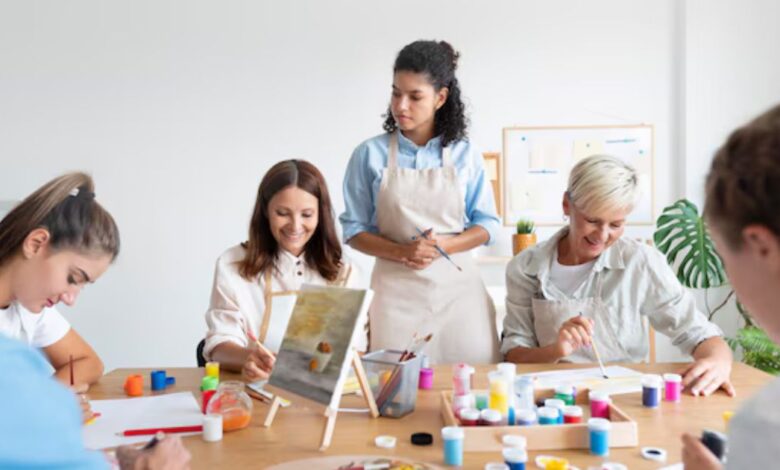Ruderne: Understanding the Art, Craft, and Community

Ruderne is not just a word but a concept that has been deeply rooted in the traditions of various cultures, particularly in Scandinavia. The term “Ruderne” refers to a unique blend of craftsmanship and artistry, often associated with traditional woodworking, design, and community-focused gatherings. As an art form, rudern’e showcases a harmonious blend of functionality and beauty, capturing the spirit of craftsmanship that has been passed down through generations. This article delves into the rich history of rudern’e, exploring its cultural significance, the craftsmanship behind it, and the ways in which it continues to inspire modern artisans and communities.
The Historical Origins of Ruderne
The tradition of rudern’e can be traced back to ancient Scandinavian societies where craftsmanship was not merely a skill but a way of life. These communities relied on crafting essential items, such as tools, furniture, and architectural elements, using locally sourced materials. In these early societies, artisans were highly respected for their skills, and their creations were considered valuable family heirlooms. The art of rudern’e represented both utility and beauty, reflecting the resourcefulness and dedication of its creators.
Cultural Significance of Ruderne in Scandinavia
In Scandinavian culture, rudern’e holds a unique place as both a craft and a cultural emblem. Beyond the physical artifacts created, rudern’e is about preserving history and tradition. Each piece crafted is a testament to the skills of artisans and serves as a reminder of the community’s heritage. Many families in Scandinavian countries still keep pieces crafted by their ancestors as cherished keepsakes. These items not only serve functional purposes but also act as symbols of continuity, bridging the gap between past generations and future ones.
Materials Used in Ruderne Craftsmanship
A key aspect of rudern’e lies in the materials chosen for crafting. Historically, artisans selected materials like pine, oak, and birch due to their availability and durability. These woods were easily accessible and capable of withstanding the harsh Scandinavian climate. The choice of wood is important not only for its durability but also for the aesthetic qualities it imparts to the finished piece. Birch, for example, is known for its light color and subtle grain, making it popular for furniture. Oak, on the other hand, is favored for its strength and dark, rich texture, often used for items that need to withstand heavy use.
The Process of Creating Ruderne
Creating rudern’e is a meticulous process that requires patience, precision, and a deep understanding of the materials. Artisans typically start by carefully selecting and preparing the wood, a step that can take several days depending on the type and quality of wood being used. The next stage involves shaping and carving, where the artisan’s skills truly shine. Many pieces are hand-carved, with intricate designs that reflect traditional Scandinavian patterns, often inspired by nature and folklore. The final stage is finishing, where oils, waxes, or varnishes are applied to enhance the wood’s natural beauty and protect it from the elements.
Techniques Passed Down Through Generations
The techniques used in rudern’e are often passed down from one generation to the next, with each artisan adding their personal touch. These methods include carving, joinery, and inlay work, which have been perfected over centuries. Joinery, for example, is a technique where pieces of wood are joined without the use of nails or screws, relying instead on carefully crafted interlocking joints. This approach not only enhances the durability of the piece but also showcases the artisan’s skill in creating seamless connections between parts.
Design Aesthetics and Patterns in Ruderne
Rudern’e designs are often inspired by Scandinavian aesthetics, which emphasize simplicity, functionality, and a connection to nature. Common motifs include geometric patterns, floral designs, and symbols from folklore, each with its own cultural significance. These designs are not merely decorative; they often tell stories or represent ideals such as harmony, resilience, and unity. The clean lines and natural textures seen in rudern’e pieces reflect a minimalist approach that values quality over quantity, a philosophy that resonates with modern design trends.
The Role of Ruderne in Community Life
In many Scandinavian communities, rudern’e is more than just a craft—it’s a social activity that brings people together. Historically, artisans would gather to share techniques, exchange ideas, and collaborate on large projects. These gatherings fostered a sense of community and helped to preserve traditional skills. Today, workshops and community centers continue this tradition, offering classes and events where people can learn about rudern’e and try their hand at crafting. Such gatherings not only keep the craft alive but also strengthen community bonds, encouraging collaboration and shared learning.
Ruderne in Modern Home Decor
With the rise of interest in sustainable and handmade decor, rudern’e has found a place in modern homes worldwide. Many people are drawn to the natural beauty and craftsmanship of rudern’e pieces, which add warmth and character to any space. From intricately carved chairs to simple wooden bowls, these pieces bring a touch of Scandinavian tradition into contemporary settings. The appeal of rudern’e lies in its authenticity; each piece tells a story of skilled hands and carefully selected materials, making it a meaningful addition to home decor.
Sustainability in Ruderne Craftsmanship
Sustainability is a core principle in the practice of rudern’e. Scandinavian artisans have long embraced eco-friendly practices, using local materials and avoiding waste. Many rudern’e artisans also engage in reforestation efforts, planting trees to replace those harvested for their work. This commitment to sustainability reflects a broader Scandinavian ethos of living in harmony with nature. By choosing rudern’e pieces, consumers are supporting sustainable practices and contributing to the preservation of traditional craftsmanship.
How Ruderne Inspires Modern Artisans
Rudern’e continues to inspire modern artisans who seek to blend tradition with innovation. Many contemporary designers are incorporating elements of rudern’e into their work, creating pieces that pay homage to traditional Scandinavian craftsmanship while adding a modern twist. This fusion of old and new is seen in furniture, home decor, and even fashion, where natural materials and handcrafted details are celebrated. By embracing the principles of rudern’e, today’s artisans are preserving the essence of this craft while pushing its boundaries.
Learning Ruderne as a New Hobby
For those interested in hands-on creativity, learning rudern’e can be a rewarding hobby. Many workshops and online courses offer beginner lessons in woodworking, carving, and finishing techniques. These classes provide an opportunity to learn the basics of rudern’e and develop skills that can be applied to personal projects. As a hobby, rudern’e offers a unique way to unwind, focus, and create something tangible. The satisfaction of crafting a functional, beautiful item by hand is a rewarding experience that connects individuals with a time-honored tradition.
Ruderne as a Form of Mindfulness
The art of rudern’e is inherently meditative, requiring focus, patience, and a calm state of mind. The repetitive motions of carving and sanding can be soothing, allowing artisans to enter a state of flow where time seems to slow down. For many, practicing rudern’e is a way to disconnect from the distractions of modern life and engage in a mindful, fulfilling activity. This mindful approach not only improves the quality of the finished piece but also offers mental health benefits, providing a sense of accomplishment and relaxation.
Preserving Ruderne for Future Generations
As with any traditional craft, there is a need to preserve rudern’e for future generations. Organizations and cultural institutions play a vital role in documenting techniques, offering classes, and promoting the work of artisans. By supporting these efforts, communities can ensure that ruderne remains a living tradition. Passing down the knowledge and skills involved in rudern’e is essential to keeping this heritage alive, allowing future generations to appreciate and continue the craft.
The Global Appreciation of Ruderne
While ruderne originated in Scandinavia, its appeal has spread globally. People from diverse backgrounds appreciate the beauty, craftsmanship, and sustainability that rudern’e embodies. The popularity of Scandinavian design in general has helped to introduce rudern’e to a wider audience, inspiring people around the world to incorporate elements of this craft into their lives. This global interest helps to keep rudern’e relevant, ensuring that it remains a cherished part of both Scandinavian culture and the global artisan community.
Conclusion
Ruderne represents more than just a craft; it is a way of life that values tradition, community, and sustainability. The dedication of artisans who practice this craft, combined with the global interest in handmade and eco-friendly products, ensures that rudern’e will continue to thrive. By understanding and supporting rudern’e, we contribute to the preservation of a unique art form that connects us to history and enriches our lives with its timeless beauty and purpose.
FAQs
What does ruderne mean in Scandinavian culture?
Rudern’e refers to traditional Scandinavian craftsmanship, often involving woodworking and design, with deep cultural and historical significance.
What materials are commonly used in ruderne?
Pine, oak, and birch are popular choices for rudern’e due to their durability and availability in Scandinavian regions.
Can ruderne be a sustainable form of craftsmanship?
Yes, rudern’e emphasizes sustainability by using local materials and supporting reforestation efforts.
How can I learn ruderne?
Many community workshops and online courses offer beginner lessons in rudern’e techniques like woodworking and carving.
Why is ruderne gaining global popularity?
The rise of interest in sustainable, handmade decor and Scandinavian design trends has brought rudern’e to a wider audience.



